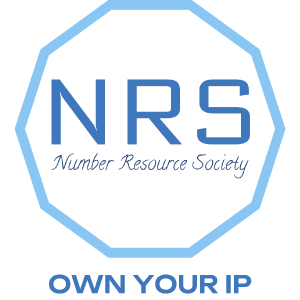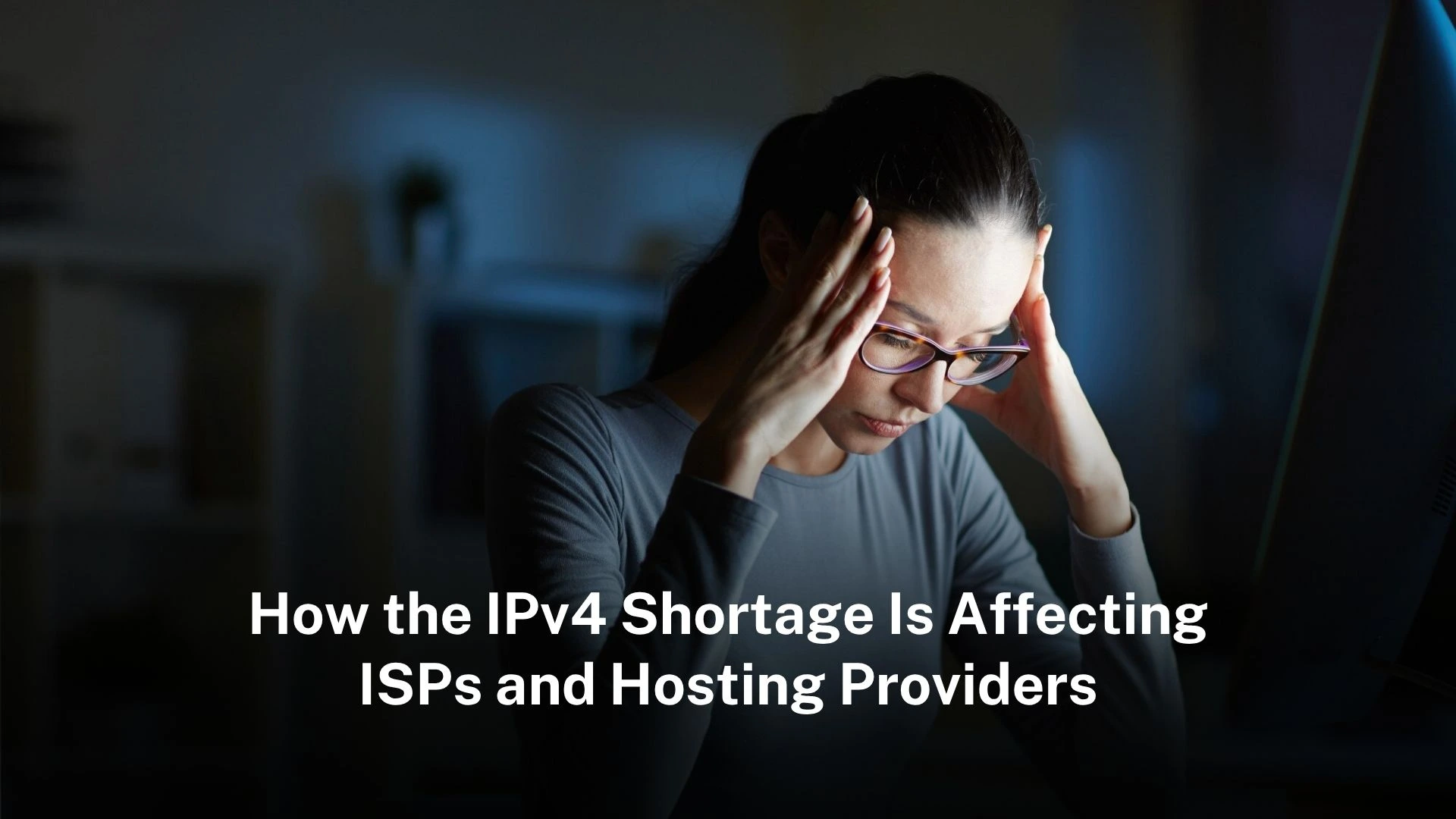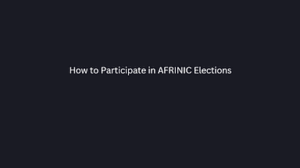How the IPv4 shortage impacts ISPs and hosting providers
·The scarcity of IPv4 addresses presents big issues for Internet Service Providers (ISPs) and hosting providers. It raises costs and forces better management of IPv4 resources.
·Using IPv4 Efficiently: Providers depend on IPv4 tools like CGNAT and address recovery to keep services running.
IPv4 development
The emergence and development of IPv4 have gradually evolved along with the continuous progress of computer network technology. The IP protocol, as the core part of the TCP/IP protocol suite, was officially defined first through RFC 791 in 1981. The document details the allocation method of IP addresses and the switching mechanism of data packets in the network. Since then, in order to adapt to the constantly changing network requirements, multiple supplementary and updated protocol documents have been successively released, such as RFC 1349, RFC 2474 and RFC 6864, etc. These documents have made further regulations and optimizations on key technologies such as differential services, data sharding and reorganization in IPv4. With the rapid popularization of the Internet and the advancement of its commercialization process, IPv4 has gradually been widely adopted globally and has become one of the unified network communication standards.
Overview of the IPv4 shortage
The IPv4 address space is composed of a total of 32 bits and theoretically can provide approximately 4.3 billion different IP addresses. This figure seemed very abundant in the early days of the Internet, but with the rapid development of the Internet and the sharp increase in the number of connected devices, the shortage of IPv4 addresses gradually emerged. In fact, the actual number of available addresses is less than the theoretical value. This is because some addresses are reserved for special purposes, such as private networks, broadcast addresses, and multicast addresses, etc. In addition, the global distribution of IPv4 addresses is not uniform, leading to an imbalance in resource allocation. The United States holds nearly half of the world’s IPv4 addresses. This is mainly because the Internet first emerged and expanded rapidly in North America, while the address resources in Europe are relatively scarce, and those in the Asia-Pacific region are even scarcer, making it difficult to meet the growing network demands.
With the rise of the mobile Internet, more and more smart phones, tablets and other mobile devices need to be connected to the Internet, which has greatly increased the demand for IP addresses. Meanwhile, the popularization of broadband technology has enabled both home and business users to access multiple devices simultaneously, further increasing the rate of address consumption. With the expansion of the Internet of Things (IoT), the number of connected devices has grown sharply. These terminals, often deployed in large quantities, have a much higher demand for IP addresses than conventional hardware.
IPv4 addresses are limited, many internet providers and network operators use technical tricks to handle the shortage. For example, NAT lets multiple devices share one public IP address. While this eases the problem for now, it also makes network management and security harder and can hold back some applications from working well or growing. IPv4, the fourth version of the Internet Protocol, uses a 32-bit system. It provides about 4.3 billion unique addresses. This was enough in the 1980s. The growth of internet use has changed that. Billions of devices have nearly used all IPv4 addresses. The Internet Assigned Numbers Authority (IANA) and five regional Internet registries (RIRs) manage address allocation. By 2019, most RIRs, including RIPE NCC, ran out of addresses.
This scarcity affects Internet Service Providers (ISPs) and hosting providers. They need IPv4 addresses for customers and servers. The shortage leads to higher costs and operational problems. Providers must manage IPv4 resources carefully to continue operations.
Why the IPv4 shortage matters
The IPv4 shortage is a major issue. The internet is still growing. Over 4.5 billion people will be online by 2025, and billions of gadgets, including smart TVs, sensors, and other linked technologies, will need distinct IPv4 addresses in order to operate.ISPs assign addresses to customers. Hosting providers use them for websites, servers, and applications. IPv4 address depletion limits expansion. New businesses find it hard to get addresses. Existing providers face higher costs or service issues.
The extent of IPv4 scarcity differs across regions. Although Asia-Pacific and Africa are experiencing fast internet growth, they have far fewer IPv4 addresses than North America and Europe.An active secondary market has developed. IPv4 addresses are bought, sold, or leased. Prices have climbed. In 2021, large address blocks cost $50 per address, up from $20-$25 in 2020. Big companies like Amazon hold over 100 million IPv4 addresses. These are worth billions, giving them an edge over smaller providers.
Effects on Internet Service Providers
The IPv4 shortage creates serious issues for ISPs. Each customer needs an address. No new IPv4 addresses are available. ISPs turn to alternative methods. Carrier-Grade Network Address Translation (CGNAT) lets multiple customers share one public IPv4 address. This saves addresses but causes problems. CGNAT increases network complexity. It also slows connections and blocks incoming traffic. Services like online gaming, video calls, or VPNs often fail.
CGNAT allows one public IPv4 address to support many users.It creates issues and cannot grow forever. A CGNAT failure can disconnect thousands of users.
ISPs face growing financial pressure. Buying or leasing IPv4 addresses costs a lot. A /24 block (256 addresses) costs about $120 monthly to lease. Customers often pay these costs. Smaller ISPs struggle to afford this. Larger providers with big IPv4 reserves have an advantage. This gap limits small ISPs’ ability to compete or grow.
Operational issues for hosting providers
Hosting providers manage servers for websites and applications. The IPv4 shortage causes big obstacles. Each server needs a public IPv4 address. Scarcity forces careful use of resources. Shared hosting helps. Multiple websites share one IPv4 address. Dedicated IPv4 addresses are needed for secure websites with SSL certificates. These are harder to get. Providers like Rackspace require active SSL certificates for dedicated addresses. Others check usage to recover unused addresses.
“The typical website owner may not notice effects right away,” notes DynamicNet. “Those needing dedicated IPv4 addresses may lose them if not used well.”
Performance issues arise. CGNAT and other NAT solutions slow connections. This hurts website loading speeds and user experience. Cloud providers cannot scale services easily. They lack IPv4 addresses for new projects. Regions with fewer IPv4 addresses, like Asia and Africa, face bigger issues.
Financial pressures in the IPv4 market
The IPv4 shortage has led to an active secondary market. Companies with extra IPv4 addresses sell or lease them. Prices keep rising. They cannot match the resources of big firms like Amazon or Microsoft.
“In autumn 2021, prices were 30 to 35 euros per address, based on block size,” reports SIDN. “Amazon’s 100 million IPv4 addresses are valued at about 2.5 billion dollars.”
The market creates unfair gaps. Large companies with big IPv4 reserves dominate. Smaller providers struggle to compete. Some propose freeing reserved IPv4 blocks, like the 127.0.0.0/8 loopback range. This could add 16 million addresses. It would need major updates to network hardware and software. Experts say this is not practical because of high costs and compatibility problems.
Methods to extend IPv4 resources
ISPs and hosting providers use tools to stretch IPv4 resources. Network Address Translation (NAT) lets multiple devices share one IPv4 address. These tools have reduced the shortage’s impact. They are not enough for long-term needs.
Carrier-Grade NAT (CGNAT) is common, especially for mobile ISPs. It saves addresses but has flaws. CGNAT slows networks. It blocks services needing direct connections, like file servers, security cameras, or peer-to-peer apps. “CGNAT is a short-term fix,” says Simple English Wikipedia. “It stops incoming connections without manual setup.”
Address recovery is another method. ISPs take back unused IPv4 addresses from failed businesses or old systems. These resources are limited. They do not fully address the shortage. Monitoring systems track address usage. This ensures better allocation. Dynamic allocation assigns addresses only when needed. This frees them up afterward. It works well for mobile ISPs with short-term user connections. Proxy servers also help. They route traffic through fewer IPs, saving addresses.
Regional disparities in IPv4 shortage impacts
The IPv4 shortage affects regions differently. Asia-Pacific, Africa, and Central Asia face worse shortages. Internet use grows fast in these areas. They received fewer IPv4 addresses early on. North America and Europe have more addresses from the internet’s early years. They still feel pressure but manage better.
CGNAT is more common in developing regions. It leads to slower connections and worse service. “Big providers in rich countries hold many IPv4 addresses,” says a user on the r/ipv6 community. “New providers in poorer countries face high costs and bad service.”
These gaps slow digital growth. In Nigeria, ISPs rely on CGNAT. This slows mobile banking apps. Users get frustrated. In India, hosting providers face delays in launching cloud services. IPv4 shortages limit their growth. In Southeast Asia, small ISPs struggle to support new users. Data centres in Africa cannot expand easily. This hurts business and innovation in these regions.
FAQs about the IPv4 shortage
1. What is the IPv4 shortage?
The IPv4 shortage is the lack of available IPv4 addresses. Internet growth exceeds the 4.3 billion address limit.
2. How does the IPv4 shortage impact ISPs?
ISPs pay more for addresses and use CGNAT. This slows networks and makes supporting new customers hard.
3. Why is the IPv4 shortage worse in some regions?
Areas like Asia and Africa have fewer IPv4 addresses and fast internet growth. This makes shortages more severe.
4. How do hosting providers address the IPv4 shortage?
They use shared hosting and audit IPv4 usage. They also lease addresses and use software to save resources.
5. What happens if IPv4 addresses run out completely?
New devices cannot connect directly. This leads to higher costs, slower networks, and limited internet growth without IPv4 tools.




Your writing is like a breath of fresh air in the often stale world of online content. Your unique perspective and engaging style set you apart from the crowd. Thank you for sharing your talents with us.
Hello i think that i saw you visited my weblog so i came to Return the favore Im trying to find things to improve my web siteI suppose its ok to use some of your ideas
Simply wish to say your article is as amazing The clearness in your post is just nice and i could assume youre an expert on this subject Well with your permission let me to grab your feed to keep updated with forthcoming post Thanks a million and please carry on the gratifying work
I am truly thankful to the owner of this web site who has shared this fantastic piece of writing at at this place.
Hi there to all, for the reason that I am genuinely keen of reading this website’s post to be updated on a regular basis. It carries pleasant stuff.
I am truly thankful to the owner of this web site who has shared this fantastic piece of writing at at this place.
Very well presented. Every quote was awesome and thanks for sharing the content. Keep sharing and keep motivating others.
I just wanted to drop by and say how much I appreciate your blog. Your writing style is both engaging and informative, making it a pleasure to read. Looking forward to your future posts!
I’ve been surfing online greater than three hours as of late, but I by no means discovered any interesting article like yours. It?¦s pretty price sufficient for me. Personally, if all website owners and bloggers made good content as you probably did, the internet will likely be much more useful than ever before.